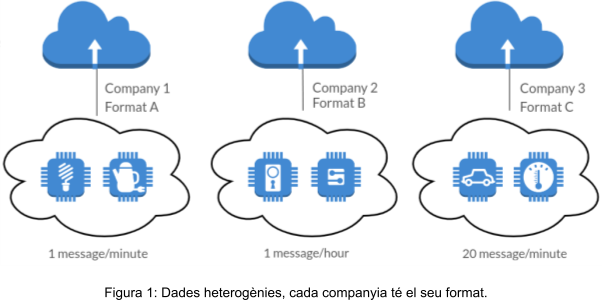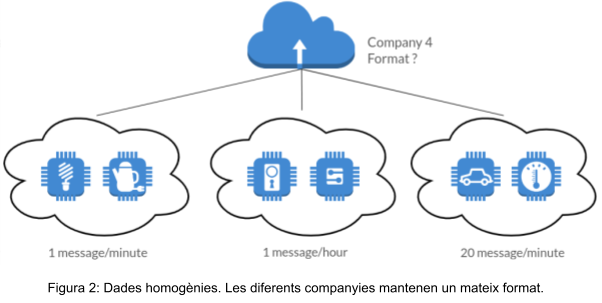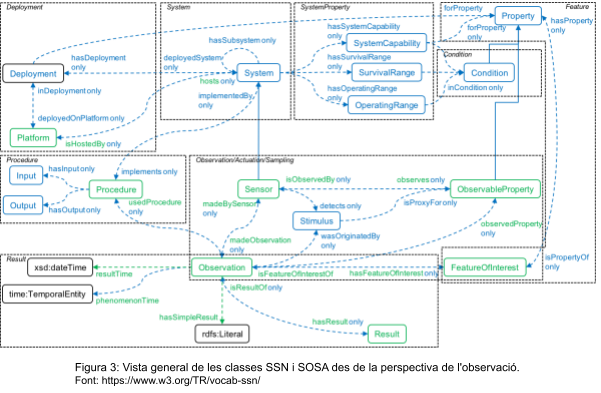In 1999, Kevin Ashton coined the term ‘Internet of Things’ (IoT). He did so by talking about RFID (Radio-Frequency IDentification) as an example. And he defined it as:
– “A ‘Thing’ , in this context, is a physical object that is intended to connect and exchange information with other devices via the Internet.”
Currently, there are more than 10 billion IoT devices communicating data on a regular, heterogeneous and globalized way [1]. In fact, according to [2], the IoT is treated as one of the most important events of the 21st century.
Essentially, an IoT device is a smart sensor connected to the Internet. These are used, in part, as personal devices, wearables or health trackers, but they are also key to the success of industrial applications such as ‘Industry 4.0’ or ‘Smart Industry’, ‘Connected Cars’, ‘Smart Cities’, ‘Smart Energy’ or ‘Healthcare’ [3]. Nowadays, almost all industrial environments depend, at some point, on IoT.
IoT environments are designed to collect and process data from even the most unexpected sites. Their expansion is making it possible to use sensors in a wide range of applications: energy management, mobility, manufacturing, smart cities, smart home devices, or even healthcare. For the latter case, there is a huge need for services capable of monitoring a patient’s medical condition; or in the former, in private use at home, for example, to monitor home security.
The purpose of an IoT device is to obtain information about an element of the physical world. This device has the ability to communicate with the environment for which it has been designed for, at a minimum. But what happens when the goal is to interconnect different devices from different companies in the same environment?

Figure 1 shows how there are three different companies. Each of them uses a different data format to send information. Transmitting information to the cloud, periodically, but without having the same periodicity. This scenario is very common: it is a completely heterogeneous scenario in terms of data format and periodicity. And for the use case indicated in Figure 1, it actually works.
In this same context, as seen in Figure 2, it appears as ‘Company 4’. This one wants to connect at the same time to the three IoT clouds of the previous companies at the same time. And to do this it encounters 3 different data formats, since each company uses a specific format, different from any other. In other words, this company, for its use case, will have to make the system compatible with the 3 data formats of others, plus its own. All this makes it difficult to share information between different environments, generating more work to do than the same use case to be done.

The problem we face here consists in providing information in a generic form, and at the same time making this information compatible with different domains. Thus, one of the possible solutions is the homogenization of data and information formats, in other words, to generate a common vocabulary.
In order to homogenize as much as possible the content of the data and the way it is being communicated, the particular syntax and data format used in the different devices must be abstracted. Also provide a common vocabulary for the domain in which it is being developed. This concept of vocabulary is called semantics.
By using semantics or ontologies it is achieved, among others [4]:
- Share a common understanding of the information structure among software agents.
- Allows the reuse of domain knowledge.
- Domain assumptions are made explicit.
There are currently several ontologies, semantics or standards that can approach the needs of each use case or domain. But if we focus on the Internet of Things, what we find is a narrower range. Some of the best known ones are listed below:
Standards:
- Observations and Measurements (O&M): Defines an XML Schema and models for observations and properties extracted from sensor readings.
- SenSensor Model Language (SensorML): Provides a semantics for defining features and properties of sensors and actuators.
- Sensor Observation Service (SOS): Provides a Web service for querying and manipulating observations and sensors.
Semantics/Ontologies:
- SSN/SOSA Ontology [5]: Ontology to be used when there is a need to join IoT vocabularies with the Semantic Web and Linked Data. Developed by Semantic Sensor Network Incubator Group (SSN-XG). Recognized since 2017 by the World Wide Web Consortium (W3C). Figure 3 shows the overview of the classes from the observation perspective.
- M3 Ontology: Developed from the SSN ontology. Extension that adds cross-domain Machine-To-Machine reasoning.
- IoT-Lite: SSN extension. As a goal, it has to define more concepts to be added to the vocabulary.
- FIESTA-IoT: It is based on the three previous ones, among others. Its objective is to improve interoperability in general.

If you are interested in the subject and in knowing more details, as part of the doctoral and industrial thesis I am pursuing, I have done (so far) two papers that may be useful:
- Vila, M., Sancho, M.R., Teniente, E.: XYZ Monitor: IoT Monitoring of Infrastructures using Microservices. In: Service-Oriented Computing – ICSOC 2020 Workshops. pp. 472-484 (2021).
- Vila, M., Sancho, M.R., Teniente, E., Vilajosana, X.: Semantics for Connectivity Management in IoT Sensing. In: Conceptual Modeling – ER 2021. pp. 297-311 (2021).
And you can also find more information in my profile, in this same website: https://inlab.fib.upc.edu/ca/supervisio-basada-en-semantiques-de-les-infraestructures-iot-mitjancant-microserveis
References:
[1] Statista – IoT Connected Devices Worldwide: https://www.statista.com/statistics/1183457/iot-connected-devices-worldwide/
[2] SmartDataCollective – IoT Is The Most Important Development Of The 21st Century: https://www.smartdatacollective.com/iot-most-important-development-of-21st-century/
[3] Zanella, A., Bui, N., et al.: Internet of Things for Smart Cities. IEEE Internet of Things Journal 1(1), 22–32 (2014)
[4] Noy, N.F., McGuiness, D.L.: Ontology development 101: A guide to creating your first ontology. Tech. rep., Knowledge Systems – Stanford University (2001)
[5] Semantic Sensor Network Ontology – W3C Recommendation https://www.w3.org/TR/vocab-ssn/